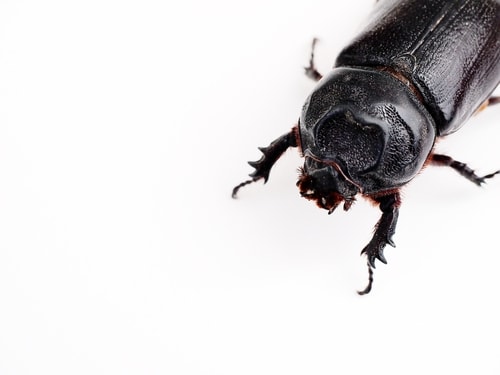Pests cause about $120 billion in damages each year
By Diego Flammini, Farms.com
The United States Department of Agriculture’s (USDA) Animal and Plant Health Inspection Service (APHIS) had just added three new and invasive pest species to a list of pests they want to stop the spread of – with the public’s help.
They are the coconut rhinoceros beetle, old world bollworm and spotted lanternfly.
Coconut Rhinoceros Beetle
As its name suggests, the beetle looks like a tiny rhinoceros. It uses its horn to bore into the crowns of palm trees and feed on sap and in doing so can expose the tree to disease. It’s destroying date, oil and the coconut palm trees found in Hawaii. Tree symptoms include V-shaped cut on open fronds and exposed coconut fibers.
Old World Bollworm
The old world bollworm could pose a serious threat to many agricultural commodities including corn, cotton, small grains, soybeans, peppers and tomatoes. Products with signs of the pest could even face export restrictions. Signs that a plant has been damaged by an old world bollworm might only be seen by cutting the fruit open. The larvae may attack young tomatoes causing them to fall from the vine and in cotton the larvae make holes in the base of the flower buds.
Spotted Lanternfly
The spotted lanternfly attacks a wide range of agriculture including fruit and hardwood trees. If ignored it has the capacity to hinder the country’s grape, orchard and logging sectors. They are known to suck sap from the stems and leaves. This weakens the plant and can contribute to its death. The plant may also ooze or weep, causing it to emit a fermented smell.
The USDA-APHIS has classified 18 pests as “Hungry Pests”, the most destructive ones that people can spread accidentally when they move, pack or go on vacation.
The USDA suggests not to move firewood, but to buy it at the location where it plans to be burned, cleaning lawn furniture before moving them, keeping plants with a quarantined area within that zone and reporting any signs of pests.
Join the conversation and tell us if you’ve ever encountered any of these pests. What measures did you take? How have you made sure these pests haven’t returned?

Coconut Rhinoceros Beetle